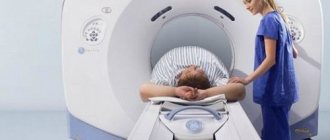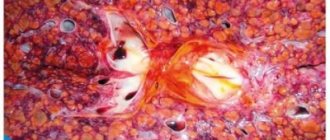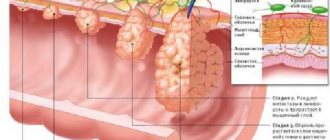Preparing to donate blood for hepatitis B and C
People of certain professions are required to donate blood for hepatitis. These are doctors, teachers, educators, and catering workers. Pregnant women, when registering, must also take tests and undergo this examination. But there are situations that require this examination:
- surgery, upcoming blood transfusion;
- in cases where biochemical liver parameters are elevated;
- after contact with a patient with hepatitis;
- when there is an outbreak in schools, kindergartens or certain areas.
In women during menstruation, the readings may not correspond to the norm. It is better not to get tested at this time. But these are not all the restrictions that need to be taken into account before the examination.
When issuing a referral for tests, the doctor must tell the patient about all the important points before taking the tests. But some people ignore this, which subsequently affects the results of the examination. False readings force you to undergo examination, take tests again, or the prescribed treatment will be incorrect.
Before taking the test, you must follow the regime several days before it is carried out.
- Blood sampling is carried out on an empty stomach between 7 and 9 am.
- Two weeks before the test, stop taking medications.
- Do not undergo x-rays, ultrasounds, MRIs.
- Avoid physical activity.
- Control your emotional and mental state.
The results of the examination are influenced by the foods taken the day before.
This is interesting: HBs Ag: what kind of analysis is it, positive, negative, transcript
ELISA
An enzyme-linked immunosorbent assay (ELISA) can detect antibodies to the virus in the blood.
This test is required before surgery, before donating blood, and is also necessary for women during pregnancy. Currently, two classes of hepatitis C virus are known. These are immunoglobulins G and M. The sum of these components determines the stage of the disease: acute or chronic.
ELISA results can be positive or false negative. This happens especially often in pregnant women and people with the second blood group. Such results are not a deviation from the norm.
A negative result indicates that the patient did not have hepatitis, but the last 6 months remain in question. The fact is that if a person became infected during this period, antibodies may not yet have formed, which is why they will not be reflected in the test results.
A positive test may be a sign that the body has encountered the hepatitis virus, but the antibodies were able to overcome it.
If a positive result is obtained after ELISA, the patient must be tested using RNA PCR diagnostics. This method is considered the most accurate in detecting hepatitis C.
What foods should be excluded or limited?
Preparation for the test does not involve any complex procedures. For those who are interested in how to take tests, on an empty stomach or not, it is worth noting that only on an empty stomach. In addition, it is worth observing certain restrictions in diet and lifestyle.
- Refuse or limit the consumption of fatty, spicy, fried foods. They put a strain on the liver, which negatively affects the results.
- Do not eat salty or pickled foods.
- Avoid alcohol, even in small doses. Smoking is contraindicated.
- Sugary drinks, baked goods, and confectionery products increase blood glucose levels.
The last meal should occur no earlier than 12 hours before the test. It's better if it's a light dinner. It is not recommended to brush your teeth. Replace evening tea with a glass of still water.
Study Information
Serology
Hepatitis B
- a viral infection caused by the DNA-containing hepatitis B virus (HBV). The source of infection is a sick person.
HBsAg is the surface antigen of the hepatitis B virus (HBV). This is the main screening marker for identifying infection and is detected in the blood 4–6 weeks after infection.
Hepatitis B virus is a DNA virus belonging to the Hepadnaviridae family. As a result of HBV infection, viral hepatitis B develops, an infectious liver disease that can occur in acute or chronic form. Hepatitis B caused 887,000 deaths worldwide in 2020, according to the World Health Organization.
Possible routes of transmission of HBV:
- sexual – infection is associated with microdamage to the skin and mucous membranes;
- blood contact – infection with biological fluids of an HBV-infected person through sharing personal hygiene items;
- perinatal - transmission of the virus from mother to child during childbirth, less often - through the blood-placental barrier;
- medical parenteral - during medical manipulations with instruments that have not undergone sufficient treatment (dental, endoscopic, etc.), transfusion of blood and its components;
- non-medical parenteral - when applying tattoos and performing other procedures (shaving, manicure, earlobe piercings, etc.) with instruments that have not undergone sufficient processing; with intravenous administration of psychoactive substances.
HBV can persist for a long time in the external environment:
at room temperature - up to 3 months, at negative temperatures - up to 20 years, when heated to 60 o C - 4 hours. The virus is not sensitive to ultraviolet irradiation, lyophilization, formaldehyde, or low concentrations of chlorine-containing disinfectants.
Acute hepatitis B is characterized by cyclic inflammation of the liver with the possible presence of jaundice. In 90–95% of cases, the disease ends in complete recovery. In the pre-icteric period (1–5 weeks), the following symptoms may appear:
- general weakness;
- increased fatigue;
- decreased performance;
- loss of appetite;
- nausea, sometimes vomiting;
- feeling of heaviness in the right hypochondrium;
- skin rashes like urticaria;
- periodic joint pain;
- short-term increase in temperature.
Against the background of jaundice, the symptoms become more pronounced. The liver increases in size. The level of total bilirubin (yellow blood pigment) in the blood increases, and the level of ALT and AST enzymes increases more than 10 times. It is possible to detect markers of acute HBV infection in blood serum: surface antigen HBsAg and anti-HBcore IgM antibodies.
In case of simultaneous infection with hepatitis B and D viruses, acute HBV/HDV co-infection may develop. Infection of hepatitis D virus in a patient with chronic HBV infection can lead to acute delta (super) infection.
Chronic hepatitis B (CHB) is a disease caused by liver damage from the hepatitis B virus that lasts more than 6 months. This form of the disease is characterized by prolonged inflammation of the liver, necrotic (cell death) and fibrotic (replacement of liver cells with connective tissue cells) changes. The risk of chronic HBV infection is largely determined by the age at the time of infection: in newborns it reaches more than 90%, in children and adolescents - 20-30%, and in adults - 5-10%.
Long-term follow-up studies of the natural history of chronic hepatitis B have shown that the incidence of liver cirrhosis in the next 5 years after diagnosis ranges from 8% to 20%. In 20% of patients with CHB, decompensated liver cirrhosis develops during the same period. With this pathology, the liver tissue is replaced by connective tissue, and the liver ceases to perform all its functions. The annual incidence of hepatocellular carcinoma (liver cancer) among CHB patients is 2–5%.
Source: rostkpk.ru
What can affect test results?
After listening to the doctors’ recommendations, patients prefer to exclude everything the day before. But fasting can negatively affect the examination results. If this lasts more than two days, then the amount of bilirubin in the blood increases sharply. And this is an important indicator when examining for hepatitis B and C. The amount of bilirubin in the blood gives an assessment of the degree of damage to liver cells (hepatocytes).
Meals before taking tests should not be plentiful, but complete. Raw vegetables and fruits are not prohibited. But yellow, red and orange are best eaten another day. On the eve of the examination, it is advisable to go to bed in a good mood and wake up no later than an hour before the examination.
Physical activity, increased emotional state, and stress cause a sharp jump and then a decrease in indicators. This situation persists for days. Therefore, it is better to exclude this. Different types of massage are not advisable.
Relatives take care of your good mood before taking tests. The patient is afraid of voicing the diagnosis. It is important to reassure him, assuring him that this simply cannot happen. If a person is in a panic state, the level of iron, cholesterol, and glucose in the blood increases. The beach, bathhouse and sauna are contraindicated. These procedures should be canceled at least two days in advance.
This is interesting: What is dangerous about hepatitis B: a complete list of possible consequences
Types of tests for hepatitis
Hepatitis is a serious disease with a fairly high prevalence. The disease has been studied by doctors for a long time, but it is still difficult to diagnose in the early stages, since the pathology is asymptomatic.
The virus can remain active even in the external environment; it is found in all human biological fluids - saliva, blood, menstrual fluid, seminal fluid, vaginal secretions. There are several types of studies that make it possible to determine not only the virus itself, but also to determine the viral load (number of copies in the blood per 1 ml) and genotype.
ELISA

An enzyme-linked immunosorbent test can detect the presence of a pathogen, regardless of the stage of the pathology. The method is informative and reliable. The patient's blood is examined using special reagents. At the same time, the method makes it possible to identify the species variety of the virus.
You need to prepare for the procedure. A medical specialist interprets the results obtained. The patient receives a form from the laboratory containing the values of antibodies and antigens.
IHA
This study appears to be a rapid test. High demand for this type of test has arisen relatively recently. The manipulation involves piercing a finger, after which biological fluid gets onto a special cassette. The results are visible in the form of stripes that appear after a quarter of an hour.
The method is convenient because you do not need to visit a medical facility to get tested. The test price is low. If a positive result is obtained, you need to consult a doctor. Using this technique, you can only find out whether the virus is in the body or not. It is impossible to determine the viral load and the type of pathogen.
PCR
The patient's blood is examined using the polymerase chain reaction method. Thanks to this technique, it is possible to determine the RNA of the virus, the viral load - the number of copies per milliliter of blood. Most often, ELISA and PCR methods are combined. If both studies give a positive result, treatment is prescribed.
Other studies
Using biochemical analysis, the concentration of liver enzymes is determined. When the liver is damaged at the cellular level, an increase in certain substances is observed. Through biochemistry, the degree of the inflammation process can be determined.
Pigment analysis allows you to determine the concentration of bilirubin. At the same time, it is possible to identify the functionality of the liver and determine the cause of yellowing of the skin. A study of protein compounds and the hemostasis system reveals the quality of protein production by the gland. Most often, hepatitis disrupts the blood clotting process.
If a patient has been diagnosed with hepatitis, it is recommended to undergo other tests - to determine HIV and sexually transmitted diseases.
How is blood drawn?
Blood for analysis is taken from a vein. If hepatitis B or C is suspected, tests are taken only in the morning or at the time prescribed by the attending physician. This is necessary to determine the amount of virus antibodies.
Antibodies are detected much later than infection has occurred. Therefore, the doctor prescribes the delivery of the material 1-6 months after the suspected infection. It is important that the patient does not try to hide certain facts and personal suspicions. This will help you create an accurate history and conduct an examination to detect the hepatitis B or C virus in the body at the right time.
- Before taking the test, the patient is asked to sit down, tune in and calm down.
- It is advisable not to change the position of the body. It is better to offer the person a place on the chair where the fence will be carried out. Changing the position can increase the content of enzymes, bilirubin, proteins and iron.
- If there is a desire to get up, then after this the person is seated again and the fence is carried out no earlier than 5 minutes later.
The material for analysis must be taken from a vein located in the area of the elbow joint. If this is not possible, material can be taken from a vein in the wrist. In infants, venous material is taken from the frontal or temporal part; mothers should not resist this.
If the patient has a bruise or scar at the site where the material was taken, then another vein is used. For diabetics, it is better to donate material from the veins located in the legs. If the doctor insists on re-examination for hepatitis, then this must be done in the same laboratory, in the same position and at the same hours. Do not change all preparatory activities. Some patients, wanting to check their data, run to get tested at other institutions. This is unjustified. This will make it more difficult for the doctor to make a correct diagnosis and prescribe treatment.
What information do markers provide?
The pathogen's own envelope is formed with the participation of HBsAg. The initial stages of development are characterized by an increase in the production of this substance. Its synthesis is even greater than is necessary for the pathogen. This marker indicator was the very first to be identified and is primarily taken into account when making a diagnosis.
It is detected in the blood within the first ten weeks after the virus enters the body. An antigen test should also be done to determine the stage of development and form of the disease. If it is present in the blood after six months, the presence of a chronic form of the disease is confirmed. If the patient has recovered, then antibodies to this antigen are detected when the test for the antigen itself is negative.
In some cases, the test does not confirm the presence of this substance in the blood. This may mean that, under the influence of the immune system, the virus is rapidly destroyed, and the pathogen does not have time to enter the blood. In such cases, the diagnosis is confirmed based on HBcorAg.
In severe cases of acute hepatitis, the absence of HBs antigen and the presence of IgM are quite often observed. Often this course of the disease leads to death.
As for other antigens, there are the following features:
- The presence of HBcor in blood serum cannot be detected. Therefore, the fact that it is present in the body is recognized by the presence of immunoglobulins M and G. Immunoglobulin M indicates that the disease occurs in an acute stage, the duration of which is no more than six months. It is detected in blood serum if the virus entered the body several weeks ago. Gradually its level decreases. In a quarter of patients it is detected within several years. Immunoglobulin G indicates that a person has ever been in contact with the virus and it remains in the blood throughout his life. If the pathology has become chronic, then the antibodies in the blood are concentrated in small quantities.
- HBeAg indicates the replication of virions and the high degree of infectiousness of the patient. If the analysis shows the absence of this substance in the blood and the presence of its antibodies, this indicates that the disease has entered the remission stage.
When diagnosing hepatitis B, the presence of viral DNA in the blood can be detected. This suggests that the pathology is in an acute form. This can be detected using polymerase chain reaction. During the analysis, a section of DNA is doubled with special enzymes to obtain the required amount of the substance for examination.
They copy only a certain section, thanks to which they can identify the problem, even if there is only one molecule of the virus in the body, which has not yet begun to divide.
The reaction provides accurate information 98% of the time. The technique can also be used in the presence of viruses containing RNA. After the analysis, the results will be deciphered. The result is considered negative when there are no antigens in the blood. HBsAg indicates that the virus is present in the body. With HBs and immunoglobulin G, it is determined that a person has suffered from a disease or has been vaccinated.
HBeAg indicates increased activity of the virus, as well as the fact that the pathogen is concentrated in the body in high concentrations and the patient poses a danger to others.
If a virus is suspected, they prefer to take blood for all three indicators at once. To determine them, an enzyme-linked immunosorbent blood test is used. During the polymerase chain reaction, the DNA of the virus, the characteristics of its genotype and the level of infection of the patient’s body are detected.
How many days will it take to get the test results for hepatitis B and C markers?
If there is a need, the laboratory carries out the analysis on an emergency basis. But this will give false readings on the immunoglobulin content. Therefore, this is rarely practiced.
In clinics and specialized centers, results are obtained quickly. But usually this happens within ten days. Sometimes material has to be transported to another location. This increases the time it takes to obtain results; the time frame can take up to three months.
This is interesting: Anti-HBs positive and negative: what does this mean, decoding
Hepatitis test (ELISA) does not always accurately establish the diagnosis. The doctor orders a re-examination. This should not frighten a person, the situation is quite normal, so getting tested is important. The first data may be perceived as false. If hepatitis B is suspected, an additional serological examination is prescribed.
When to get tested
The patient receives test results for hepatitis C within 5 working days.
As a rule, they are done in one day, and the patient can get the result the very next day. The table below shows how often you need to be tested for hepatitis C, depending on the type of test.
| Indicators | How often should I take it? | Notes |
| Total bilirubin, ALT and AST, complete blood count (including platelets) | Once every 6-12 months | The frequency of studies depends on previous results, the course of the disease and the presence of concomitant pathologies. |
| Total protein, as well as iron, glucose, amylase | 1 time per year | How often a study is conducted is influenced by previous performance. |
| Creatinine, blood urea | 1 time per year | The frequency of diagnosis depends on previous results. |
| Alpha fetoprotein | Once every six months | If the indicators are exceeded, CT and ultrasound are necessary |
| Autoantibodies | One time | If the indicators have changed, the frequency of diagnosis depends on the previous indicators. |
| Thyroid hormones | One time | With changed indicators, the frequency of diagnosis depends on previous results. |
| HBsAg | 1 time per year | It is carried out in order to exclude mixed hepatitis and hepatitis B in acute form (with enzymatic exacerbation). |
| HCV RNA | 1 time per year | Only qualitative analysis is carried out. Quantitative is needed only if the qualitative result is positive. |
| Ultrasound of the abdominal organs | 1 time per year | The frequency of the study is determined individually if symptoms of portal hypertension appear. |
| EGDS | Once (if signs of pathology progression are detected) | When VRVP is detected, the frequency of diagnosis is determined individually. |
| Liver biopsy | Once every 5-6 years | If the indicators are stable, a biopsy is performed every 5-6 years. |
It is worth noting that the frequency of most of the above analyzes is determined individually.
Markers of viral hepatitis: what are they?
Hepatitis markers are unique indicators of the presence of a virus in the blood. Such molecules, foreign to the body, are usually of a protein nature. They are called antigens. Hepatitis viruses consist of such proteins with antigenic properties. They promote better uptake of viral cells by hepatocytes. In addition, these protein elements begin to produce new proteins containing the DNA of the virus. This is how the disease spreads, invades and destroys cells.
When an antigen enters the blood, the body begins to produce antibodies to it. This is a reaction of the immune system that contributes to the development of specific immunity to this infection. Antibodies combine with antigens to form special immune complexes. They are markers of hepatitis and allow one to determine the presence of infection even at the initial stage.
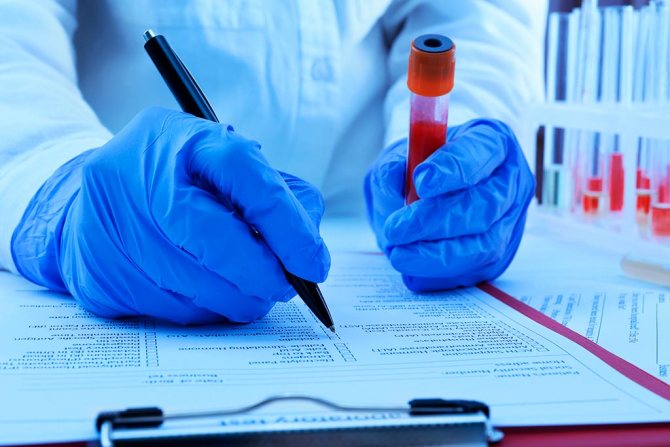
Quite often this disease begins asymptomatically. In addition, many people may simply be carriers of the virus. And the infection is transmitted when even the slightest particle of blood gets from an infected person to a sick person. This can happen during sexual intercourse and even during everyday contact. At first, a person may not realize that he or she has become infected, and symptoms appear when liver cells begin to break down. That’s why it’s so important to donate blood for hepatitis markers in a timely manner. This will help avoid complications and not infect others.
To identify markers of viral hepatitis, two types of blood tests are used: ELISA and PCR. Enzyme immunoassay is the detection of antibodies to the virus. ELISA not only determines the presence of the virus in the blood. It allows you to determine what form the disease takes, how effective the treatment is, and whether immunity has developed after recovery. PCR is a polymerase chain reaction. This test determines the presence of specific viral DNA.
How long do you need to wait for the exact result?
How much blood testing for hepatitis is done depends on its type and on the medical institution that performs the analysis. You can wait for results from 1 to 10 days. The duration of the study depends on where the laboratory is located. In specialized clinics, the result can be obtained a little faster, since the analysis is done in the same building where the material is delivered. If biological material needs to be transported from the collection site to the laboratory, the duration of the research increases. The validity period of the analysis ranges from 20 days to 3 months, depending on the research method.
It should be borne in mind that the enzyme-linked immunosorbent test (ELISA) method used to diagnose hepatitis does not always allow an accurate diagnosis to be immediately established. Even if the collection of biomaterial was done correctly and the patient followed all the preparation rules. There is a risk that a mixed infection has entered the body, which is a combination of 2 different types of hepatitis virus, for example B and D. In this case, the test result will be false negative.
Sometimes a false negative test result is obtained when blood is tested for hepatitis B. The fulminant malignant form of the disease is difficult to detect using laboratory tests using ELISA, so additional serological tests may be needed.
A false negative result is observed at an early stage of the disease, when the body has not yet produced enough antibodies for detection. If the research result is positive, the biomaterial is taken again to eliminate error.
Source: venerologia03.ru
What to do if you suspect viral hepatitis C: necessary tests and medications
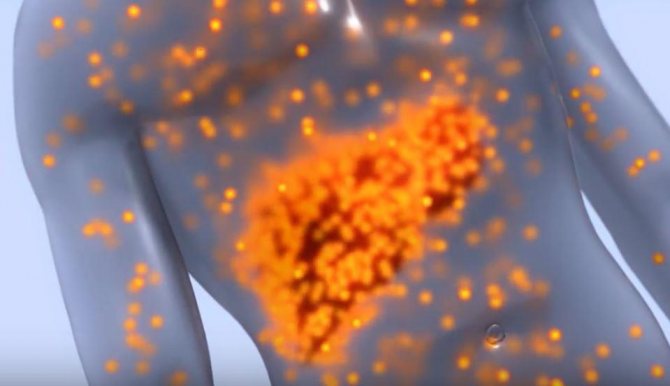
Hepatitis C is an infectious liver disease that occurs in acute or chronic form. The causative agent is an RNA-containing virus, which is transmitted primarily through the blood by the parenteral route. Suspicion of hepatitis C arises from a characteristic clinical picture - pain in the right hypochondrium, jaundice of the skin, indigestion, intoxication. In case of deterioration of health, screening is done - ELISA and quantitative PCR analysis.
What to do if hepatitis B is detected?
The name of the disease is frightening, but doctors do not advise panicking. The disease is considered curable; only in 10% of cases does it develop into a dangerous form and lead to negative consequences if the disease is not treated correctly or is ignored. If a virus is detected, the doctor prescribes a course of treatment and diet. It is necessary to systematically undergo diagnostics for hepatitis and monitor the dynamics of the process. During the treatment phase, an important role is played by the restoration and maintenance of the patient’s immune system and compliance with the work and rest regime. Family members living in the same premises are vaccinated.
Source: sovbezchr.ru




